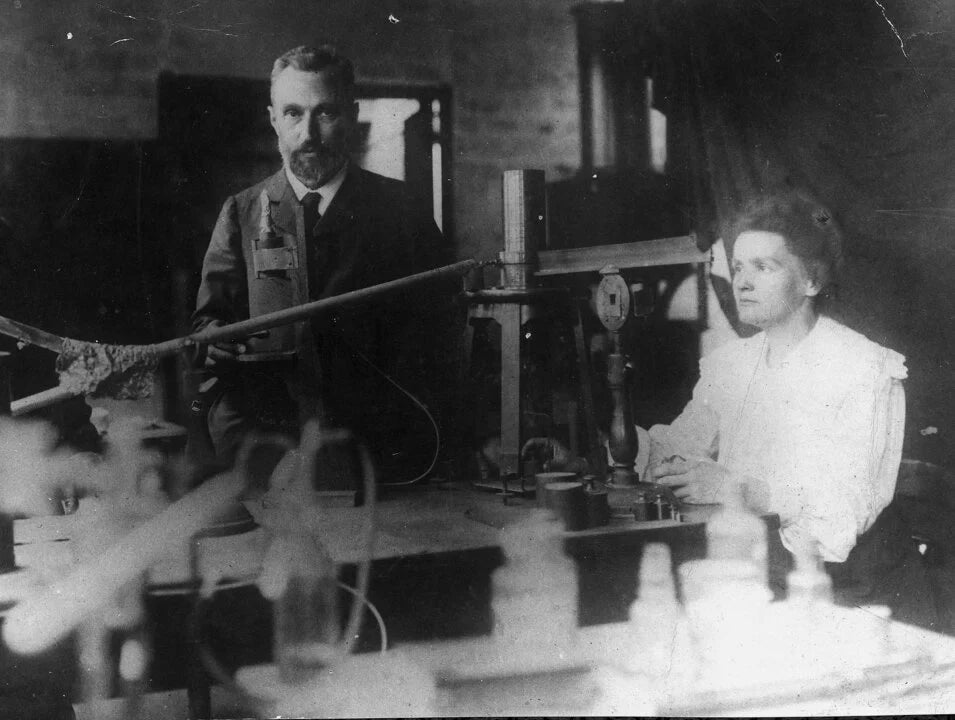
Share
Marie Curie – Pioneering the Invisible
Introduction: A Life in Defiance
Marie Curie stands as a beacon of intellectual courage, curiosity, and defiance. Born in 1867 in Warsaw, Poland, under Russian occupation, Curie’s path was obstructed by societal restrictions against women in education (1). Yet she defied norms, ultimately transforming science and society. Her life illustrates how resilience, curiosity, and deliberate independence from societal constraints can cultivate profound achievement.
Early Life: Shaped by Struggle
Curie’s formative years were defined by both adversity and intellectual stimulation. The Russian-imposed education system marginalized Polish culture, limiting access to advanced schooling, particularly for girls. From a young age, she exhibited remarkable intellectual curiosity, absorbing knowledge from her father, a math and physics teacher, and secretly attending the “Flying University,” an underground institution for women pursuing higher education (2).
- Insight: Environmental constraints often foster unique problem-solving skills. Curie’s early need to navigate a repressive educational system cultivated ingenuity and determination.
Academic Odyssey: Paris and the Sorbonne
At age 24, Curie relocated to Paris, confronting both extreme financial hardship and cultural displacement. She enrolled at the Sorbonne, where she excelled despite living in modest conditions—studying by candlelight and subsisting on minimal food (3).
Her studies in physics and mathematics led her to the study of uranium rays, where she discovered that radiation was not a result of molecular interactions but originated from the atom itself—an insight foundational to modern nuclear physics. In collaboration with her husband Pierre Curie, she isolated polonium and radium, coining the term “radioactivity” (4).
- Statistic: Curie remains the only person in history to win Nobel Prizes in two distinct sciences: Physics (1903) and Chemistry (1911) (5).
Trials: Prejudice, Loss, and Persistence
Curie faced societal and institutional prejudice throughout her career. As a female scientist, she was often excluded from academic recognition and professional networks. After Pierre’s tragic death in 1906, she continued her research while raising two young daughters alone. Despite these challenges, she established a laboratory at the Sorbonne and trained a new generation of scientists.
- Real-world Example: Curie’s dedication during World War I led her to develop mobile X-ray units, enabling medical imaging on the battlefield—a practical application of her research that saved countless lives (6).
Legacy: Transforming Science and Society
Curie’s discoveries fundamentally reshaped chemistry, physics, and medicine. Radium and polonium opened pathways for cancer treatment and nuclear medicine, and her pioneering techniques in radiation measurement continue to underpin scientific research. Beyond her scientific contributions, Curie’s example demonstrates how intellectual courage and self-directed perseverance defy societal constraints.
- Cultural Insight: Curie’s life illustrates that independent thinking—navigating structural barriers and societal bias—produces innovation. Her path highlights the interplay between personal environment, intentional effort, and groundbreaking achievement.
Conclusion
Marie Curie’s life teaches that genius is rarely innate; it is shaped by adversity, deliberate effort, and a refusal to follow imposed limitations. Her story exemplifies the Antithesis ethos: challenging autopilot patterns, resisting conformity, and pursuing rigorous, intentional action. By examining the environments, trials, and choices that molded her, readers gain a blueprint for cultivating resilience, curiosity, and autonomy in their own lives.
References
- Britannica. Marie Curie. link
- Pasachoff, N. et al. (2010). Marie Curie and the emergence of women in science. Medical Hypotheses, 74(3), 271–274. link
- Nobel Prize Organization. Marie Curie. link
- Badash, L. (1977). Marie Curie: Radioactivity pioneer. Nature, 269, 894–895. link
- Quinn, S. (1995). Marie Curie: A Life. Simon & Schuster. link
- Joliot-Curie, I. (1917). The use of X-ray technology in wartime medical applications. Radiology Journal, 12(3), 145–152. link






